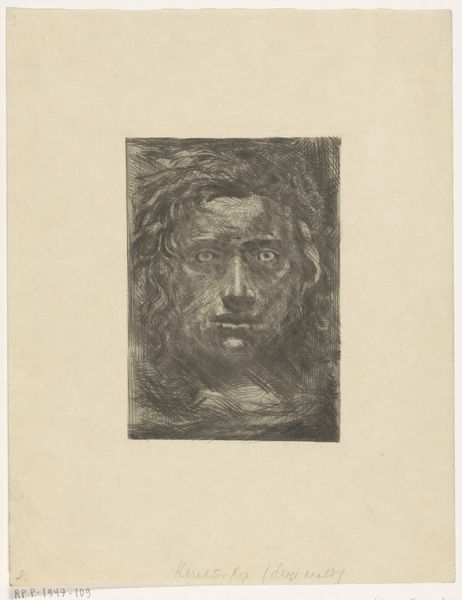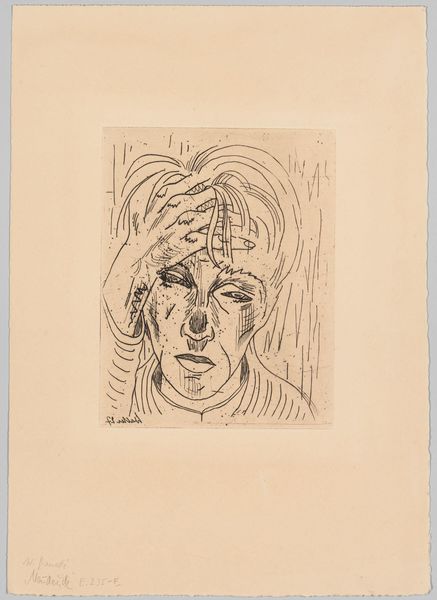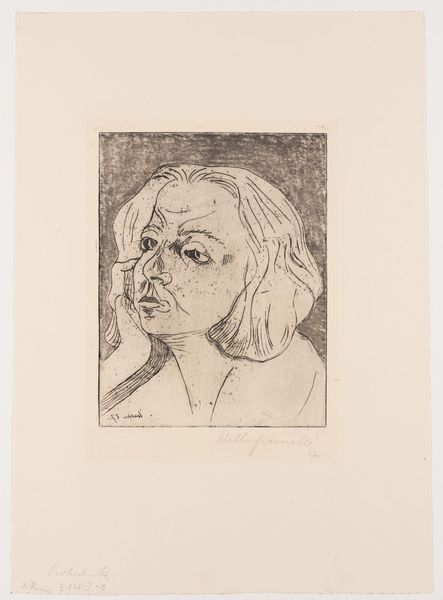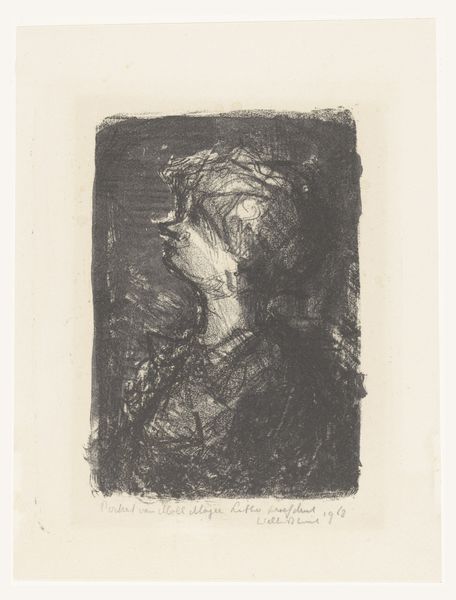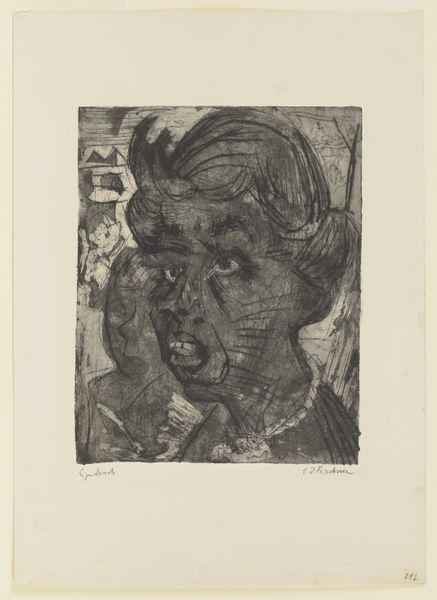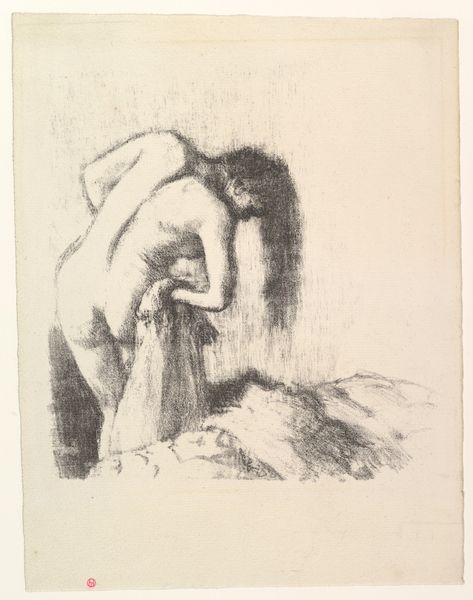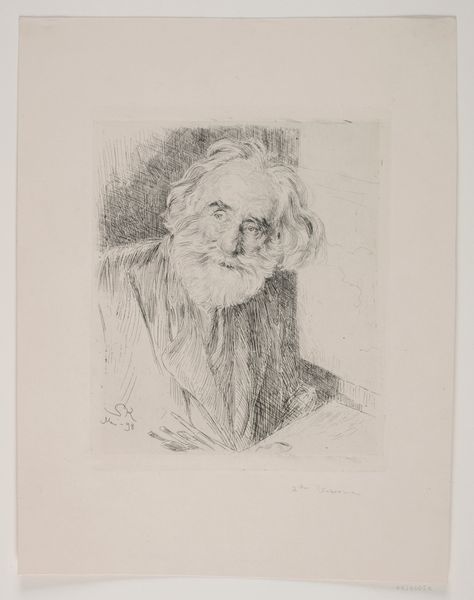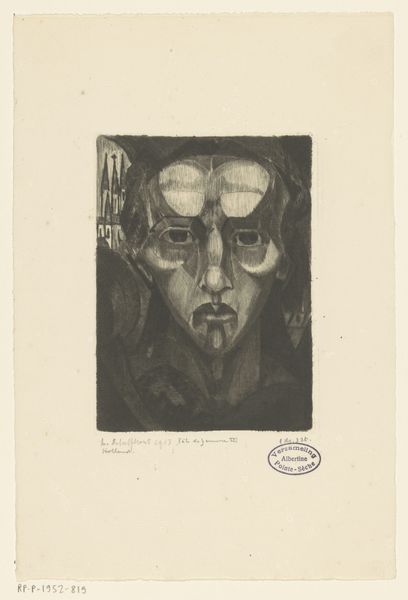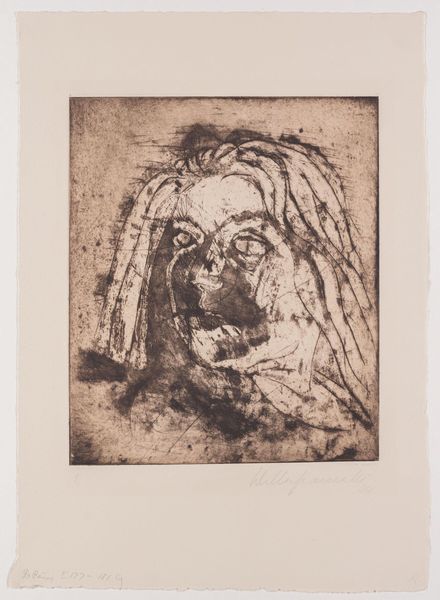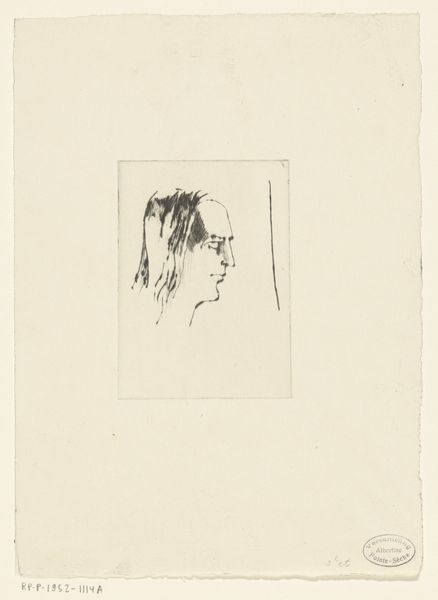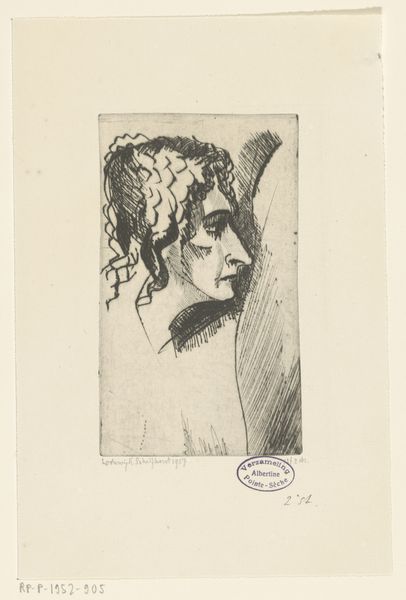
Self-Portrait, Hand at the Forehead 1910
0:00
0:00
kathekollwitz
Museum of Modern Art (MoMA), New York City, NY, US
etching
#
self-portrait
#
head
#
etching
#
german-expressionism
#
pencil drawing
#
sketch
#
expressionism
#
line
Dimensions: 33.3 x 24.9 cm
Copyright: Public domain
Curator: This is Käthe Kollwitz's "Self-Portrait, Hand at the Forehead," created around 1910. It's an etching, currently residing at MoMA in New York. Editor: Wow, it's stark. That hand obscuring part of her face, it’s like a dam holding back a torrent. You immediately sense the weight of her inner world. Curator: Absolutely. Kollwitz was deeply engaged with representing human suffering, and her self-portraits, like this one, are especially poignant. As a woman artist navigating a male-dominated art world in early 20th century Germany, the very act of self-representation carried its own significance. Editor: It feels intensely private, even vulnerable. The swirling lines create a sense of unease, like the world around her is pressing in. You almost feel you’re intruding on a very personal moment of reflection, or maybe even despair. Curator: I think the technique contributes to that. The etching process allows for those intricate lines and shading, but also for a sense of rawness. Kollwitz isn’t trying to prettify or idealize; she’s conveying something much deeper and, dare I say, messier. The fact that she repeats the lines almost creates this nervous sense. Editor: Yes, there's nothing polished or performative about it. Her gaze, though partially hidden, is so direct, almost challenging the viewer. It’s saying, "Here I am, in all my complexity, with all my burdens." Curator: And considering the context, it's hard not to see echoes of the social and political upheavals of the time reflected in that burden. Kollwitz bore witness to immense hardship, and channeled it into her art. Editor: It’s interesting how she reclaims the self-portrait, a traditionally bourgeois and mostly male genre. Here, it’s not about vanity or status; it’s about bearing witness and conveying raw emotional truth. That’s one of the legacies of Kollwitz; in many ways her prints made very visible so much that was hidden about human nature. Curator: Precisely. It reminds us of the power of art to give voice to the voiceless and to confront difficult realities head-on. Editor: So, this self-portrait leaves you contemplating the burden of existence and, strangely, it brings a sense of quiet power and resilience. Curator: Yes, there is definitely a lasting intensity from seeing such an honest exploration of selfhood and the world.
Comments
No comments
Be the first to comment and join the conversation on the ultimate creative platform.
